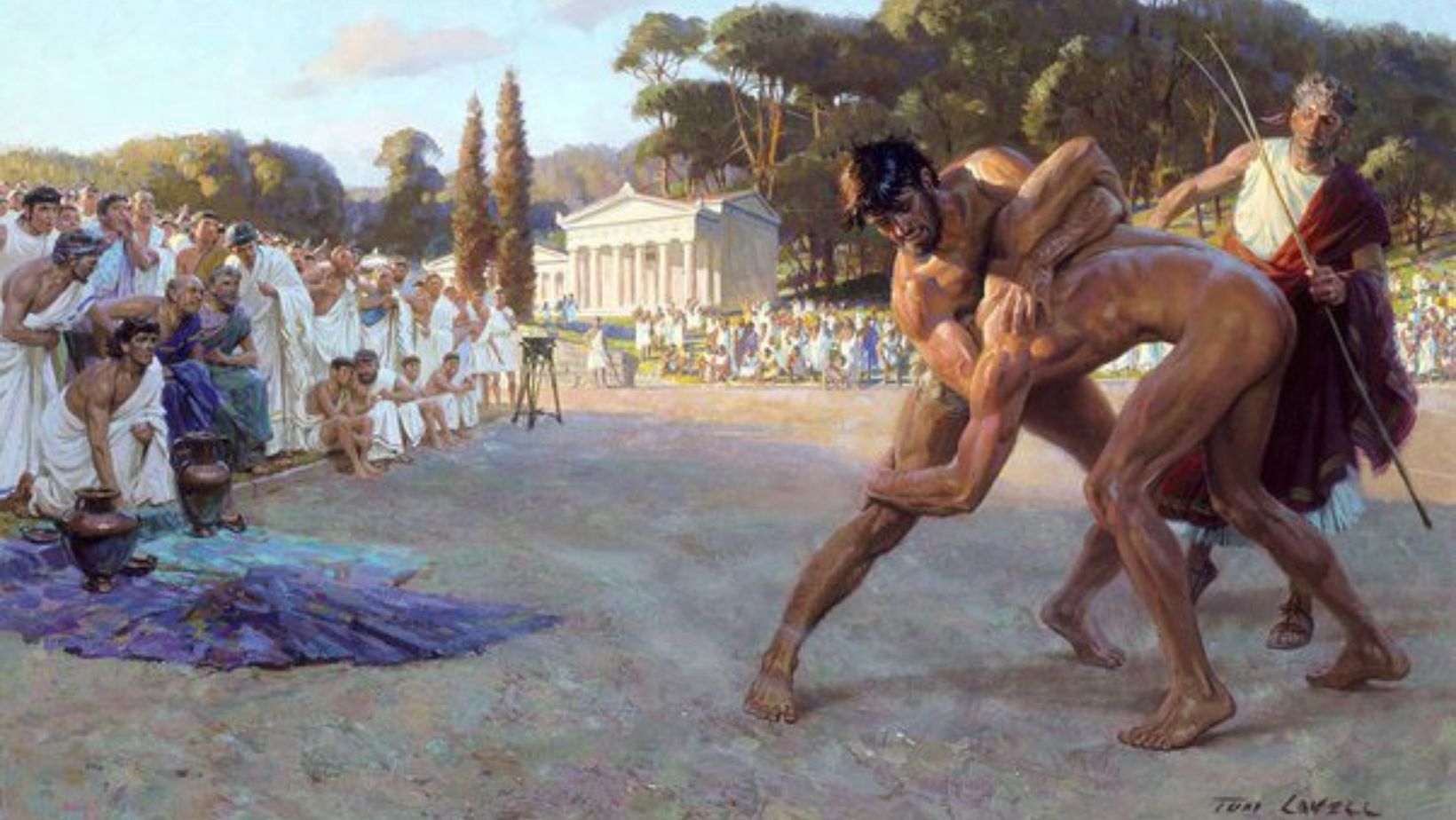Ever wondered what competitors wore during the ancient Olympics? Unlike today’s high-tech polyester blends, Ancient Olympic Games clothing had its own unique flair that reflected both the culture and values of ancient Greece. From running barefoot to competing entirely in the nude, these athletes’ attire (or lack thereof) tells a story not just about sports but also about society’s evolution.
The inception of athletic nudity, an eye-opening shift around 720 B.C., wasn’t merely for show or scandal—it was steeped in philosophy and practicality. It highlighted a blend of civility and competition that has shaped how we view sportsmanship to this day.
Table of Contents:
- History of Clothing in the Ancient Olympic Games
- What Did Ancient Olympic Athletes Wear?
- Prizes and Awards in the Ancient Olympic Games
- Conclusion
History of Clothing in the Ancient Olympic Games: Ancient Olympic Games Clothing

The ancient Olympic games were a spectacle like no other. But what did the athletes wear?
According to an ancient inscription, the first athlete to compete nude was a runner named Orsippos in 720 B.C. His loincloth fell off mid-race, but he kept going and won. After that, nude competition became the norm.
The Spartan Claim
The Spartans claimed athletic nudity showed how civilized Greek society was compared to their rivals. Historian Thucydides argues it started around 5 B.C. as a way to one-up the Persians.
Mythical History of the Games: Ancient Olympic Games Clothing
For the Greeks, competing in the buff was the ultimate flex. It proved they had a truly advanced culture. But this tradition didn’t start immediately – the games began in 776 B.C. and nudity wasn’t the standard until later.
What Did Ancient Olympic Athletes Wear?
So, if birthday suits were the uniform of the day, did ancient Olympians wear anything at all?
Winners were awarded an olive wreath crown. The leafy accessory was a symbol of glory and sacred to Zeus. Artists like Michelangelo were inspired by the nude, crowned victors, and immortalized their god-like physiques in sculptures and paintings.
The Athletic Cup?
There is no evidence that ancient athletes wore protective gear. It was au naturel.
Events and Training
The ancient games featured many familiar events, such as foot races, jumping, discus, javelin, wrestling, and boxing. Athletes trained intensively with coaches to perfect their nude skills.
Prizes and Awards in the Ancient Olympic Games: Ancient Olympic Games Clothing
Victory in the Olympics brought fame and fortune. But what exactly did athletes win?
In ancient times, winners received an olive wreath and their name was inscribed in the official records. Today, gold medals and lucrative endorsement deals await Olympic champions.
Why There’s Still More to Learn
Despite centuries of study, there’s still a lot we don’t know about ancient Olympic clothing (or lack thereof). Archaeologists continue to uncover tantalizing clues, but much remains a mystery.
Good Online Sources of Information
Want to dive deeper? Check out these resources:
Key Takeaway: Ancient Olympic Games Clothing
Athletes in the ancient Olympics went for gold in their birthday suits, making a bold statement about Greek culture. Winners rocked an olive wreath crown as their only accessory, showing off their victory and dedication to Zeus.
Conclusion: Ancient Olympic Games Clothing
So there you have it—a glimpse into the wardrobe (or rather, the absence thereof) of those who competed in ancient Olympia. Far from being just a quirky historical factoid, understanding Ancient Olympic Games clothing, or their deliberate choice to avoid it, gives us insight into broader themes like societal norms, body positivity, and what it truly means to compete ‘in your natural state.’
This exploration through time sheds light on how far we’ve come yet reminds us that at our core—the thrill of competition binds humanity across ages. And as you reflect on this journey back in time remember; while our clothes may change along with technology advances or cultural shifts—passion for sport remains timeless.